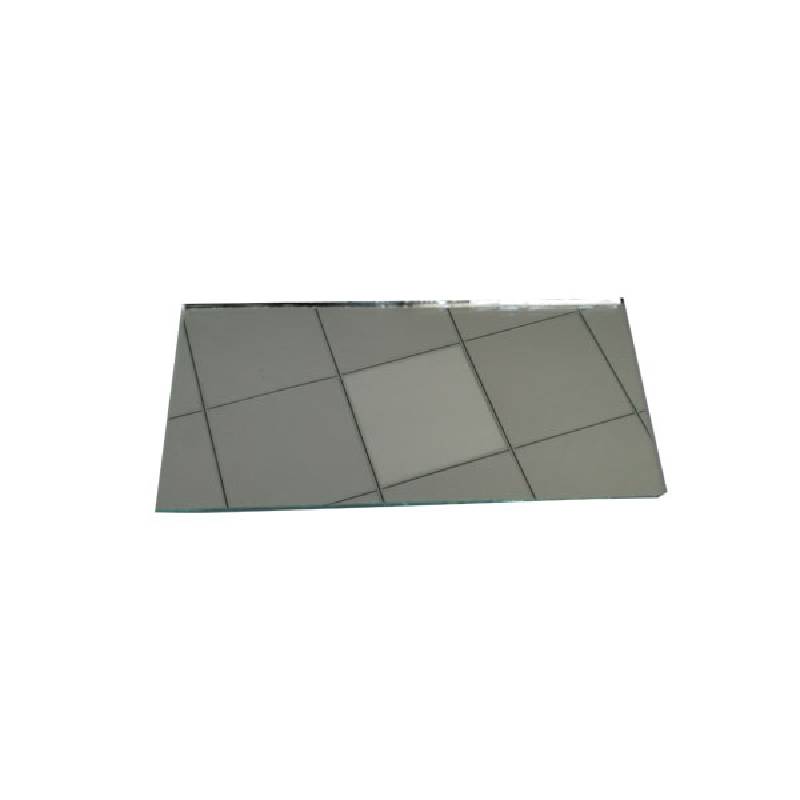The Process and Significance of Float Glass Manufacturing
Float glass manufacturing is a pivotal process in the modern glass industry, known for its ability to produce high-quality, flat glass products that have become essential in various applications, from construction to automotive industries. This method was developed in the 20th century and has since revolutionized how glass is produced, offering unparalleled clarity and uniform thickness.
The Float Glass Process
The float glass process begins with the melting of raw materials, which typically include silica sand, soda ash, and limestone. These materials are mixed in precise proportions and heated to extremely high temperatures (around 1,700 degrees Celsius) in a furnace. This high-temperature the process transforms the raw materials into molten glass.
Once the glass is melted, the next step involves the floating process, which is the hallmark of this manufacturing method. The molten glass is poured onto a moving bed of molten tin. This unique step is where the term float glass comes from, as the glass literally floats on the surface of the tin. The reason for using tin is its high density and ability to remain in a liquid state at the temperature of the molten glass; it provides a smooth, reflective surface that ensures a level and uniform thickness of the glass. The glass spreads out and conforms to the surface of the tin, creating sheets of glass that are remarkably flat and free of distortions.
After the glass has floated for a certain period, it is gradually cooled down in a controlled environment, a process known as annealing. This cooling is crucial for relieving internal stresses that form during the cooling of the glass. The glass sheets are then cut to specific dimensions and undergo various finishing processes, which might include polishing, coating, and tempering, depending on their intended applications.
Applications of Float Glass
Float glass is utilized in countless applications due to its unique properties. In the construction industry, it is primarily used for windows, facades, and glass doors. The clarity and smoothness of float glass enhance the aesthetic appeal of buildings while also providing natural light and insulation. Additionally, float glass is used in automotive manufacturing, where it provides windshields and side windows that are both strong and clear.
float glass manufacturing
Moreover, float glass serves as a substrate for different types of coatings that enhance properties such as thermal insulation, UV protection, or self-cleaning capabilities. This adaptability makes it invaluable in modern architectural designs that prioritize efficiency and sustainability.
Environmental Considerations
While float glass manufacturing presents numerous advantages, it is not without its environmental challenges. The melting process requires significant energy, contributing to carbon emissions. However, the industry is increasingly adopting eco-friendly practices to minimize its environmental footprint. Many manufacturers are investing in energy-efficient technologies and exploring alternative energy sources, such as solar or wind power, to reduce their reliance on fossil fuels.
Additionally, float glass is 100% recyclable, and the recycling process is relatively straightforward. Glass cullet (recycled glass) can be reused in the manufacturing process, requiring less energy than using raw materials and significantly reducing waste. This circular approach is vital to reducing the overall environmental impact of glass production.
Future of Float Glass Manufacturing
As technology continues to advance, the float glass industry is poised for significant innovations. Future developments may include improved processes that enhance energy efficiency and reduce waste even further. Nano-coatings and smart glazing technologies are also areas of growth, allowing float glass to perform additional functions, such as regulating temperature or providing electronic capabilities.
In conclusion, float glass manufacturing represents a critical segment of the glass industry, providing high-quality, versatile products for an array of applications. Its process is not only remarkable for its efficiency and quality but also for its adaptability in meeting the evolving demands of modern society. As technological advancements continue to shape this field, the potential for sustainability and innovation in float glass manufacturing will likely lead to a brighter and greener future.
 Afrikaans
Afrikaans  Albanian
Albanian  Amharic
Amharic  Arabic
Arabic  Armenian
Armenian  Azerbaijani
Azerbaijani  Basque
Basque  Belarusian
Belarusian  Bengali
Bengali  Bosnian
Bosnian  Bulgarian
Bulgarian  Catalan
Catalan  Cebuano
Cebuano  Corsican
Corsican  Croatian
Croatian  Czech
Czech  Danish
Danish  Dutch
Dutch  English
English  Esperanto
Esperanto  Estonian
Estonian  Finnish
Finnish  French
French  Frisian
Frisian  Galician
Galician  Georgian
Georgian  German
German  Greek
Greek  Gujarati
Gujarati  Haitian Creole
Haitian Creole  hausa
hausa  hawaiian
hawaiian  Hebrew
Hebrew  Hindi
Hindi  Miao
Miao  Hungarian
Hungarian  Icelandic
Icelandic  igbo
igbo  Indonesian
Indonesian  irish
irish  Italian
Italian  Japanese
Japanese  Javanese
Javanese  Kannada
Kannada  kazakh
kazakh  Khmer
Khmer  Rwandese
Rwandese  Korean
Korean  Kurdish
Kurdish  Kyrgyz
Kyrgyz  Lao
Lao  Latin
Latin  Latvian
Latvian  Lithuanian
Lithuanian  Luxembourgish
Luxembourgish  Macedonian
Macedonian  Malgashi
Malgashi  Malay
Malay  Malayalam
Malayalam  Maltese
Maltese  Maori
Maori  Marathi
Marathi  Mongolian
Mongolian  Myanmar
Myanmar  Nepali
Nepali  Norwegian
Norwegian  Norwegian
Norwegian  Occitan
Occitan  Pashto
Pashto  Persian
Persian  Polish
Polish  Portuguese
Portuguese  Punjabi
Punjabi  Romanian
Romanian  Russian
Russian  Samoan
Samoan  Scottish Gaelic
Scottish Gaelic  Serbian
Serbian  Sesotho
Sesotho  Shona
Shona  Sindhi
Sindhi  Sinhala
Sinhala  Slovak
Slovak  Slovenian
Slovenian  Somali
Somali  Spanish
Spanish  Sundanese
Sundanese  Swahili
Swahili  Swedish
Swedish  Tagalog
Tagalog  Tajik
Tajik  Tamil
Tamil  Tatar
Tatar  Telugu
Telugu  Thai
Thai  Turkish
Turkish  Turkmen
Turkmen  Ukrainian
Ukrainian  Urdu
Urdu  Uighur
Uighur  Uzbek
Uzbek  Vietnamese
Vietnamese  Welsh
Welsh  Bantu
Bantu  Yiddish
Yiddish  Yoruba
Yoruba  Zulu
Zulu 

